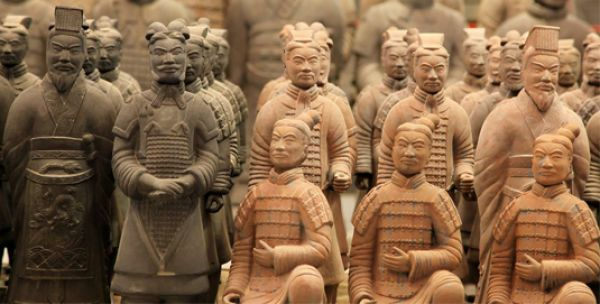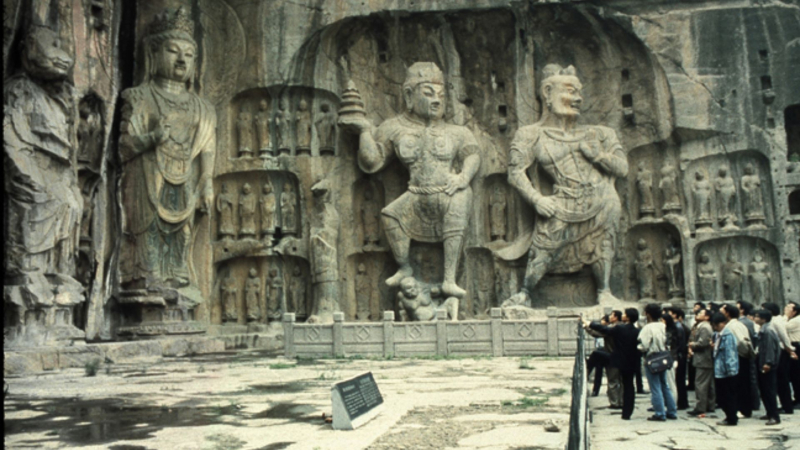Sculpture
The art of large-scale figure sculpture has not endured well, although some magnificent specimens still exist, such as those carved out of the rock face at the Longmen Caves and Fengxian temple close to Luoyang. The 17.4 m tall statues, which date to 675 CE, depict a Buddhist Heavenly King and demon guardians. The life-sized sculptures of Shi Huangti's "Terracotta Army" are another well-known example of Chinese art. The tomb of the Qin emperor was guarded by almost 7,000 warrior figurines, 600 horses, and many chariots. Despite all of the figures being created from a small selection of assembled body parts made from molds, great effort was made to make each one distinctive. Faces and hair, in particular, were altered to give the appearance of a real army made up of unique individuals.
The Shang Dynasty (c. 1600–1046 BCE) is renowned for its cast bronze artwork in terms of smaller-scale pieces. Three-legged cauldrons, often with legs shaped like animals, birds, or dragons, are typical forms of bronze pots. They might have handles and lids and come in square or circular shapes. Masks, scroll designs, and repetitive patterns are some examples of sharp relief decorations. Additionally, the Shang craftsmen created vessels that resembled three-dimensional animals, including rams, elephants, and mythical creatures.
Small-scale sculpture of the Han period took the form of stone or bricks stamped and carved with relief scenes, and it was especially frequent in tombs. Outstanding examples can be found at Jiaxiang's Wu Liang Shrine. There are approximately 70 relief slabs dating to 151 CE or 168 CE that depict battle scenes and notable historical people like Confucius, all recognized by accompanying texts and providing a chronological Chinese history in a graphic record similar to a history book.
Cast bronze statues of horses were also common throughout the Han era. These are frequently shown at full gallop with just one hoof resting on the base, giving the impression that they are virtually flying. From the Han era, it is common to find earthenware figurines of solitary standing women, men, and servants. Small sculptures and elaborate incense burners were made from cast bronze. These were frequently gilded or inlaid with gold and silver. A magnificent example is a late 2nd century BCE kneeling servant girl-shaped oil lamp made of gilded metal.
Large figure statues were occasionally erected outside the tombs of emperors and other notable individuals, although many later sculptures focused on Buddhist themes. By the Tang dynasty, the Buddhist monasteries' affluence had allowed for a significant increase in the production of sacred art. The Buddha and the bodhisattvas continued to be the most popular subjects, and they were depicted in everything from tiny figurines to life-size monuments. Figures, in contrast to earlier periods, became far less static, and their apparent fluid movement even drew criticism from some who thought that, on occasion, serious religious figures now resembled court dancers.











